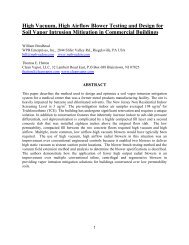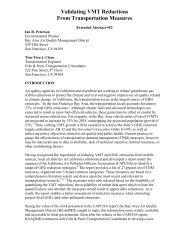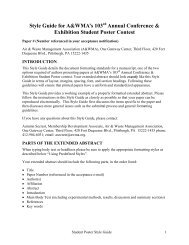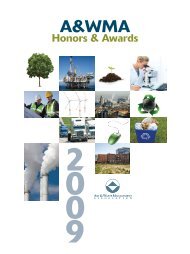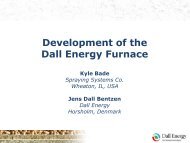Abstract Book
Abstract Book
Abstract Book
You also want an ePaper? Increase the reach of your titles
YUMPU automatically turns print PDFs into web optimized ePapers that Google loves.
showed high self-contribution of total nitrate. However, Korea and Japan were influenced<br />
by northern and central China and showed low self-contributions which were 23~46%<br />
and 43~69%, respectively, with seasonal variation. We also discovered that we could not<br />
ignore the impact of Japan for Korea. Their contribution showed a similar level as the<br />
self-contribution of Korea.<br />
Relationships Between The Surface Layer Dynamics And Ambient VOCs<br />
Concentrations In An Urban Area Under Industrial Emissions (70)<br />
Y. Xiang, 1 H. Delbarre, 1 N. Locoge, 2 T. Leonardis, 2 M. Fourmentin, 1 P. Augustin 1 ;<br />
1 Université du Littoral Côte d'Opale, Laboratoire de PhysicoChimie de l'Atmosphère,<br />
Dunkerque, France, 2 Ecole des Mines de Douai, Dpt. Chimie et Environnement, Douai,<br />
France<br />
The transport and dispersion of pollutants depends on the temporal and spatial variety of<br />
sources and meteorological phenomena, particularly on a local scale. The specific gas<br />
marker measurement associated with the characterization of the surface layer behaviours<br />
may constitute a tool to study industrial emission dynamics. Our objective is to develop a<br />
methodology to examine the interdependence of the behaviours of type of industrial<br />
sources and the influences of meteorological conditions. Meanwhile, this paper will focus<br />
on the variation of the concentration of volatile organic compounds (VOCs) as a function<br />
of dynamic parameters. A measurement campaign of 90 VOCs, among which 20 are<br />
oxygenated volatile organic compounds (OVOC), was performed by using gas<br />
chromatography during July and September 2009 at two urban sites exposed to industrial<br />
emissions in the Urban Community of Dunkerque. The VOC concentrations were<br />
examined by taking into account several meteorological parameters (wind directions,<br />
atmospheric stability...). The ambient VOC pollution is not only predominated by wind<br />
direction, but also by turbulence intensity and the highest levels were recorded for<br />
slightly unstable conditions. Different behaviours of some VOCs in the same wind<br />
direction allow the nature of different sources to be identified. And so, from this analysis,<br />
it’s possible to distinguish between pollutants emitted from chimneys and those due to<br />
surface emissions. These specific markers will make it possible to use a positive matrix<br />
factorization (PMF) modeling to calculate the contribution of an industrial source and to<br />
study the evolution of this contribution in regard of meteorological conditions.<br />
3E: EFCA/IUAPPA Special Session: Co-Benefits of Integrated Climate-Air<br />
Pollution Policies and Strategies [Panel]<br />
(Sponsored by European Federation for Clean Air) - Historically, air pollution and<br />
climate change have been addressed at distinct periods and through different bodies. An<br />
increasing number of studies and conferences, notably within the European Community<br />
institutions, have shown evidence that air pollution and climate change phenomena are<br />
closely intertwined, with both synergetic and antagonistic effects. Different assessment<br />
methods and tools, such as the GAINS model, already allow looking into various aspects<br />
of the co-benefits and possible trade-offs of air pollution/climate change policies.<br />
Awareness is progressively raising at international, national and sub-national levels that<br />
26




